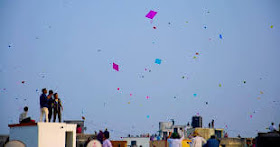History Of Makar Sankranti 2019
Uttarayan, as Makara Sankranti is brought in Gujarati, is a noteworthy celebration in the province of Gujarat which goes on for two days. Gujarati individuals acutely anticipate this celebration to fly kites, called 'patang'. Kites for Uttarayan are made of extraordinary light-weight paper and bamboo and are generally rhombus formed with focal spine and a solitary bow.
New Delhi: The country has adapted to respect the Lohri blaze and spread the Makar Sankranti cheer. Makar Sankranti, otherwise called Makara Sankranti, is commended in different parts of the Indian subcontinent to watch the day which denotes the movement of the sun into consistently extending days. The celebration is a regular recognition just as a religious festival.
The celebration is transcendently a collect celebration and is commended all through India, from north to south and east to west. While Makar Sankranti is most mainstream in West India, down south, the celebration is known as Pongal and in the north, it is commended as Lohri.
It is the celebration of til-gul where sesame and jaggery laddoos or chikkis are dispersed among all.
The celebration is a sunlight based occasion, making it one of only a handful couple of Hindu celebrations which fall on a similar date in neighborhood schedules each year: 14 January, with a few special cases when the celebration is praised on 15 January.
It is accepted to be a period for harmony and success. The day is viewed as imperative for profound practices, and in like manner, individuals take a sacred dunk in waterways, particularly in Ganga, Yamuna, Godavari, Krishna, and Cauvery. The showering is accepted to wash away sins.
Otherwise called Makar, the celebration is praised in numerous parts of South Asia with some provincial varieties. It is known by various names and celebrated with various traditions in various parts of the district. Different parts of the nation additionally celebrate by taking a dunk in the heavenly waterways coursing through states to wash down themselves of sins.
Each district commends it in incalculable routes, as indicated by the localization, culture, and conventions.
Delhi and Haryana
Delhi and Haryana and many neighboring states consider Sakraat or Sankranti to be a primary celebration of the year. Churma of ghee, halwa, and kheer are cooked uniquely on this day. One sibling of each hitched lady visits her home with an endowment of some comfortable dress for her and her better half's family. It is designated "Sidha".
Ladies used to give a blessing to their in-laws, and this customs called "Manana". The beneficiary will sit in a haweli (principle royal residence where men sit together and share hookka). Ladies go to haweli to sing society tunes and give endowments.
Thanks For Visit My Website.
